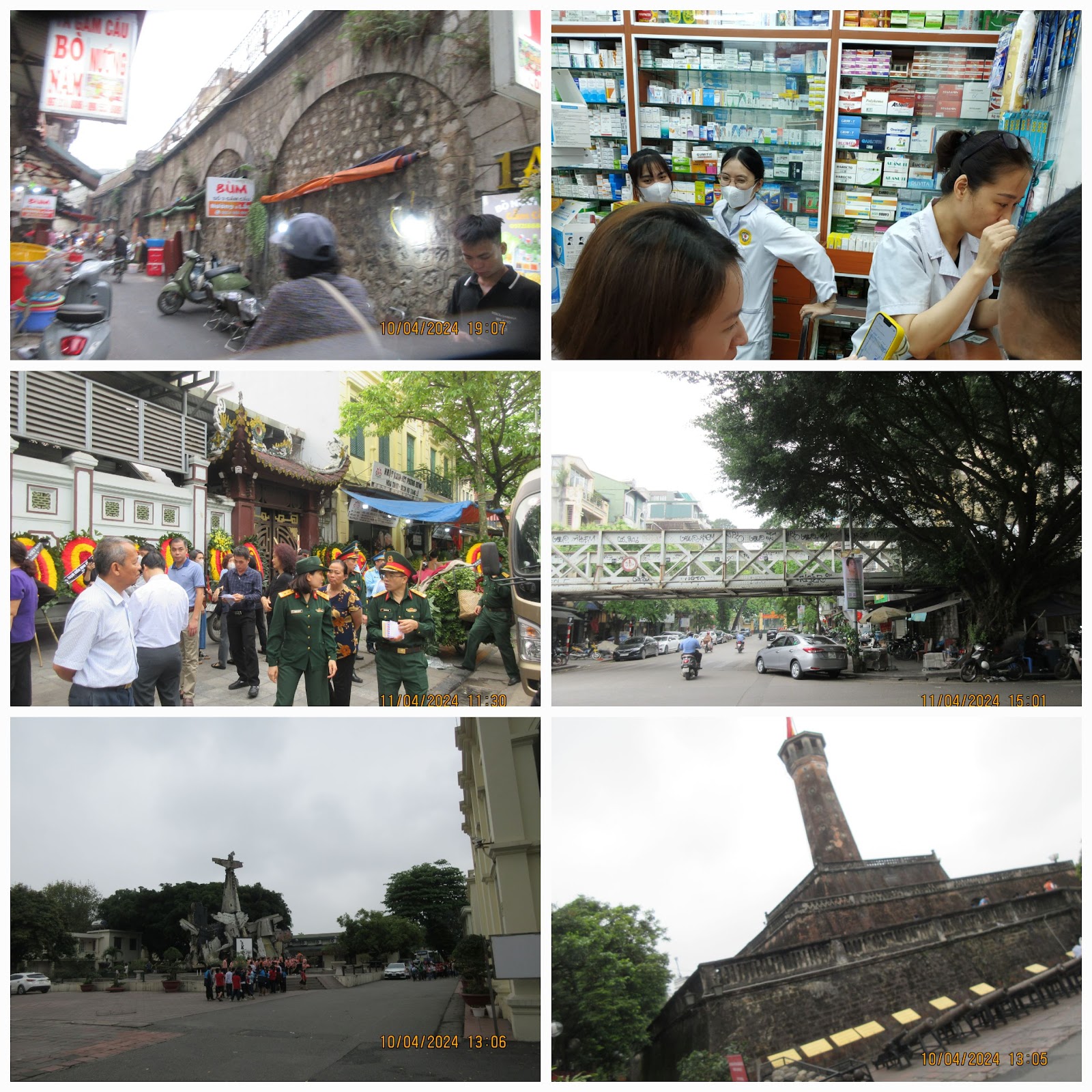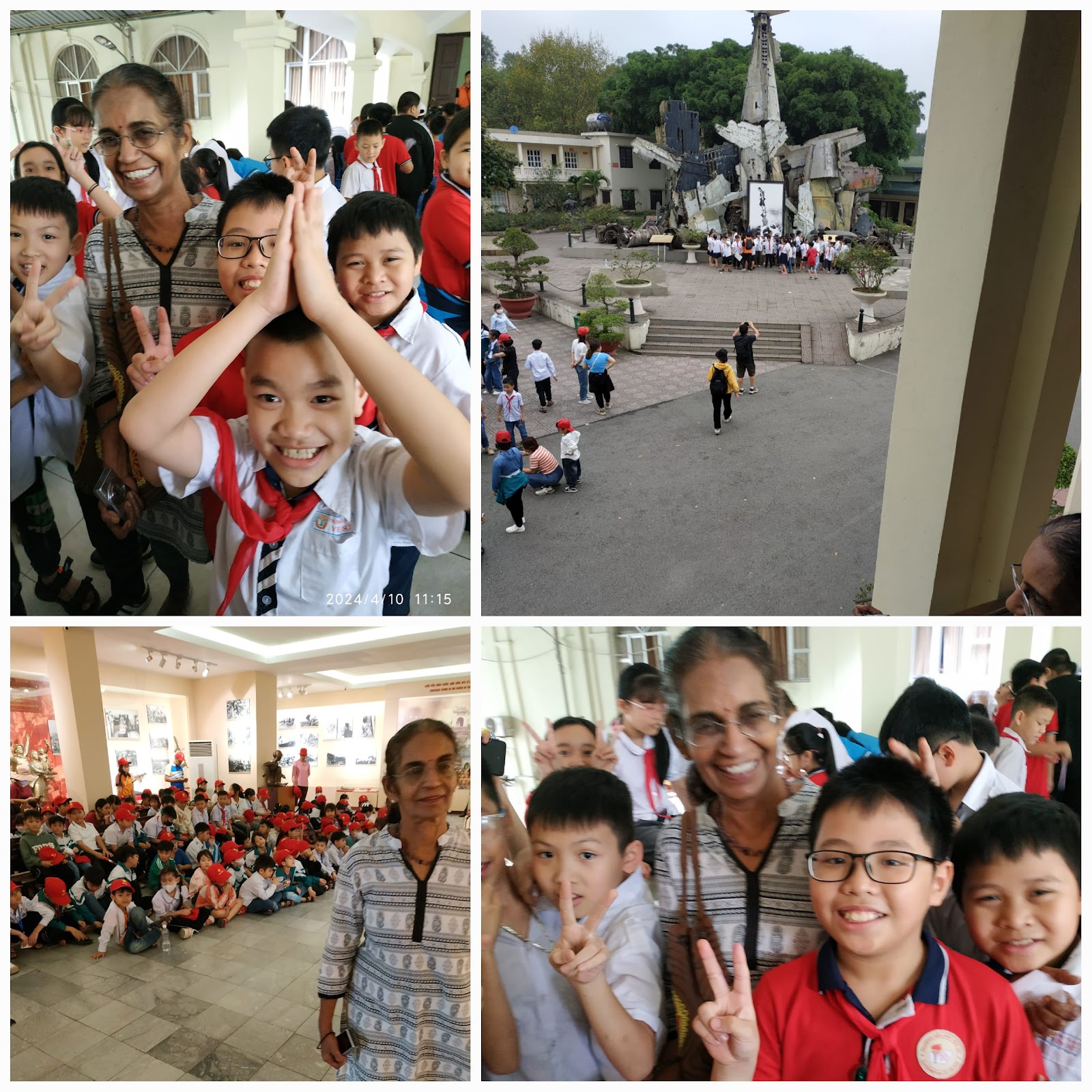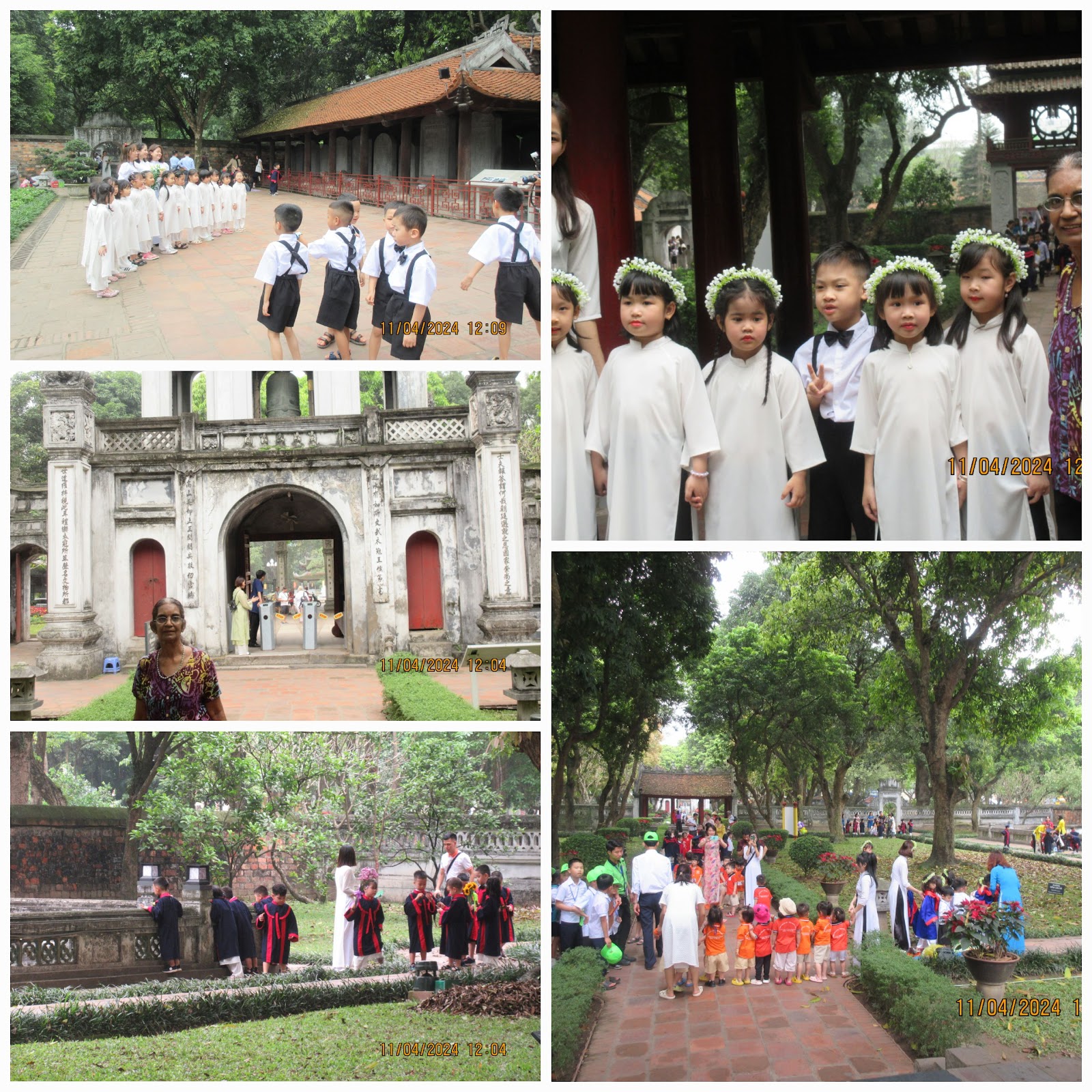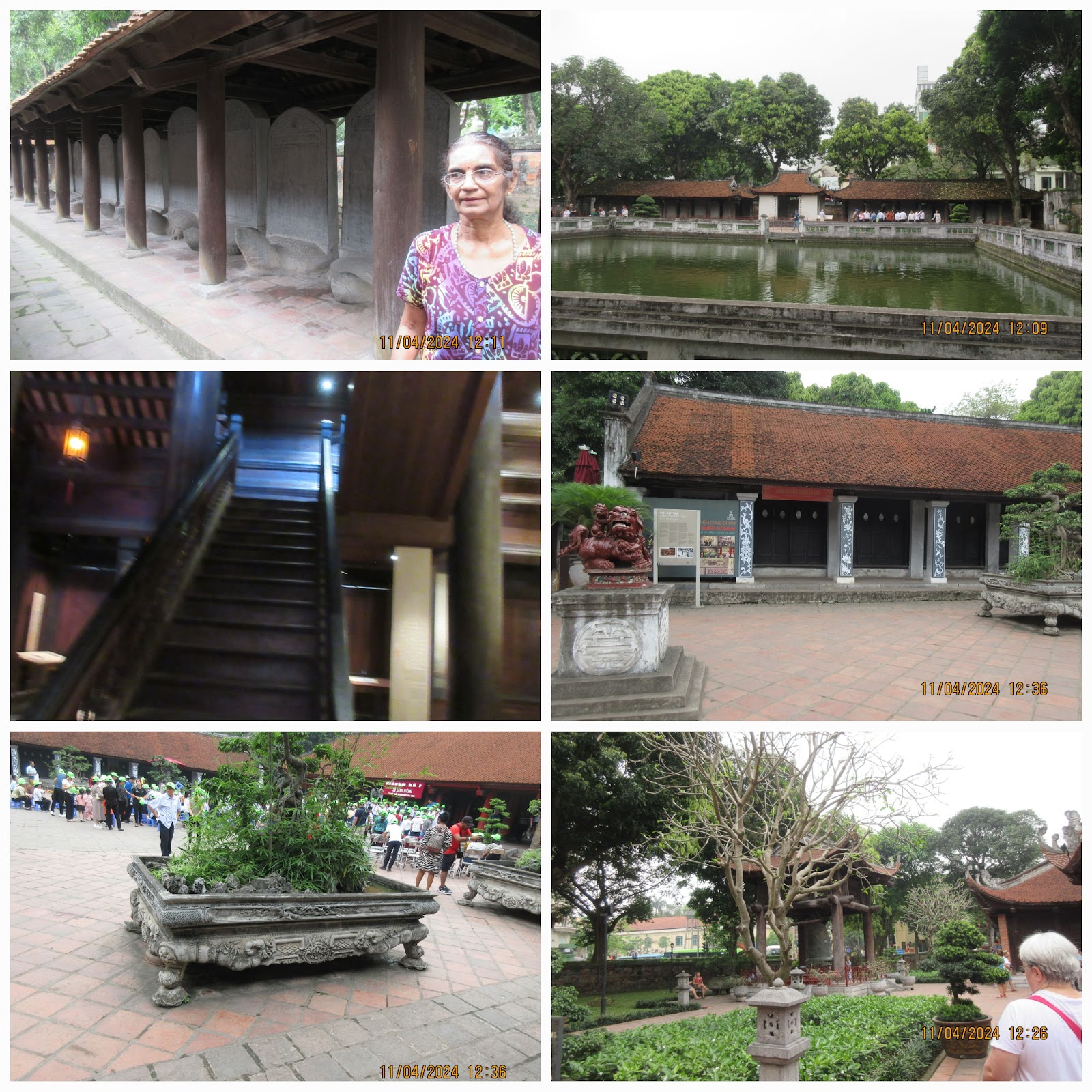The importance of being educated
Like schools anywhere in the world Vietnamese schools instill moral values, stress the 3 Rs, include extracurricular activities, etc. In all my 30 years of teaching the English Language I've come across 100s of Vietnamese teens and adults. I have found them to be generally hardworking and focused. They have a good background in Vietnamese literature and history. I've also talked to ex-teachers from Vietnam who have reiterated that the above two subjects are taken seriously in schools. Learning takes precedence. The teacher is highly respected.
It is all reaffirmed in our recent visit to Hanoi
Hitting the wall
The day we go in search of the HCM Mausoleum we get a little confused. I'm not very used to offline maps. No big deal, for it leads us to surprises and unique experiences, in spite of the initial tension. We have been walking all along one of the arterial streets in the old town with which we are by now quite familiar, but we have not come this far before and we are facing a wall. The old quarters is a maze of streets going in every which direction. The monument is on the other side of the wall. Little do we notice that there are railings on the top. (Next day, when we walk by again, we realise it is the famous train tracks going through narrow roads lined by cafes.)
All aflutter
We have an idea that we'd have to turn left and walk on till we find a gap in the wall. How far? We decide to ask at the corner pharmacy which is very busy. The white coated women (no surprise) are busy dispensing medicine to the hordes of customers. One of them seems to be free and I ask her for directions. I speak to her forming my words slowly and clearly. I show her the Vietnamese name of the monument. She begins to get flustered, punches into her mobile phone. English translation: I don't understand. I ask her again. Same desperate response. She's hysterical. Noticing her agitation a younger woman comes to her rescue. She looks into her phone and hastily draws an L on a piece of paper, roughly torn from a notebook, indicating the streets we have to negotiate. She gets back to work. The older woman is still flustered all because she couldn't help us!
Learning bites
Nothing to it but explore. We walk and we walk, and we walk. About 20 mins into it we ask again. Go straight and turn left. No idea how far or how long. But we get to see a parade of army officers, and suited men and women all bearing floral wreaths to be displayed at the entrance to an important looking building. Were they congratulating someone? Were they celebrating an official, or a significant day? All we can see are concentric ovals of yellow and red on easels. We now know they were funeral wreaths.
The elusive gap
At last we see a busy road under the bridge going over and across a gap in the wall. We see Khaki clad sentries in almost every building on the street. We must be nearing the mausoleum. We happen to pass a building that declares itself as the EXPO. Ah! There it is. A huge rectangular park dominated by a statue of Lenin. The building opposite must be it. We are stopped at the gates of a run down yellow and green building. Really, is this the Mausoleum? No. It is the Museum! You have to get tickets. “We close in half an hour.” So says the guard. We are not normally into museums but why not now since we've walked this far and still have no clue as to the whereabouts of the Mausoleum?

Game for history?
This is the Military History Museum. Hordes of students fill the courtyard and the unique and Historic Flag Tower ( the mathematical game, Tower of Hanoi, takes its name from here) flying the huge Vietnamese flag. Teachers are busy guiding their wards and getting them to pose for pictures. Some groups are snacking but not a single piece of trash is left behind!
Most of the exhibits in the 3 different buildings are on the second floor and if we really want to see anything within 30 mins,we'd better be climbing each one, walk through the rooms, walk down, climb another set of stairs in the next building and so on. It would have been like a marathon if not for the sea of school children surging up and down the stairs, or sitting in the exhibition halls ‘listening’ to their guides or teachers trying to get their attention through megaphones!
Shifting focus!
Needless to say, we are a great distraction. Everybody wants to say hi or hello and even slap a high five! As we wade through them they are eager to befriend us. The moment I mention we were once teachers, our Vietnamese counterparts clearly express their respect with their beaming smiles and approving nods!
The instruments of war may speak of the country's proud history, but the students and teachers showed us that it was not just intellect they valued but also their culture.

The mausoleum
We find out from a tourist, “somewhere over there perhaps with a slight left”, that we are very close to the Mausoleum. Again we have to take a few tentative turns but the various sentries graciously point us in the right direction. The security is tight. Most foreigners come in groups and have their own guides speaking different languages. We are not ready to stand in a long line to see the embalmed body of a venerated leader. Let's leave it to the Vietnamese. The colossal mausoleum and its expansive grounds are impressive but all the interesting buildings around it are closed to the public. That is a let down.
The bonus
As we walk further in we see lots of tourists, souvenir shops and shady trees. Surprise of surprises! We are at the One Pillar Pagoda, a historic site I thought would be out of the way. On the map this diminutive structure seemed not so easily accessible from the mausoleum. (We may not want to come this way again since there is so much more to explore elsewhere.) Its unique architecture resembling the lotus flower raised above the water, roots buried in the mud, the 13 steps that augur fertility and prosperity, and the bodhisattva tree, a gift from India aptly represent Buddhist beliefs and values. Besides, it has survived the ravages of war that called for some restoration.

A spanner in the works
Drink was so tired that his legs were giving out and so he decided to favour a young man calling out for us to take his taxi. We tell him where we want to go and he takes us to a car 2nd in a line of about 10. There's an older driver in the car. The ‘hailer‘ and the driver point to the meter to convince us of their honesty. I'm hesitant but. . . We hop in. We take off with the meter on. The meter reading climbs slowly. The direction seems right. Then the familiar roads. The driver is very chatty trying to point out the tourist attractions and how he has friends, especially Indians. I look at the meter and then begin to relax daring to peel my eyes off the honest looking numbers. We sight a landmark near where we were staying and ask to stop. Within a few secs the meter has been run at full throttle. The 5 km ride cost us more than the 45 km ride from the airport. I shake a finger at the driver. Drink is struggling to sort out the currency notes that have so many zeroes. The driver dips into Drink’s wallet to pull out the notes held onto very firmly. The driver begins to grab the wallet but the owner's fingers are iron clad. It is like a tug of war! The driver definitely tweaked the meter when he had distracted us enough.
We had been warned. We were sceptical. Then we plunged in. Alas, we were outsmarted!
Recuperation from a bruised ego
We had hoped to go to the Temple of Literature on the same day for it was in the vicinity. But we decide to leave it for the next day after nursing our ‘wounds’.
This time we have no difficulty finding our way even though it was complicated. The street names have all become very familiar and we are more at home in the Old Quarter.
Far from the madding crowd into ripples of cheer and colour.
A temple. That of learning. Shouldn't the atmosphere be calm, solemn, serene? Shouldn't this huge complex of 5 courtyards separated by significant ornate gates, filled with manicured gardens, tranquil lily ponds and traditional style pavilions be a calm oasis in the middle of a frenzied city? Not today. It's filled with children from kindergarten to high school dressed in ao dais, formal attire, and graduation gowns, posing with family or teachers, tossing mortar boards in the air for that floaty photograph. Here and there we hear sobs from an overwhelmed child being consoled by the teacher, or an exchange of giggles. The photographers gently coax their subjects into picture perfect poses.

It's the end of the school year. Graduating classes at all levels are celebrating their promotion to the next level. Some older children are holding on to either exam tickets or result slips, respectively asking for good luck or thanking the gods that be. At the Confucius shrine, a priest in fine silk robes reads out a prayer from a scroll. The largest temple drum in Vietnam booms. The long necked phoenixes perched on turtles, flanking the leading deified Chinese Scholar, seem to stand stiffly at attention.
From the privileged to the egalitarian
This is Vietnam's first University. It was built in the 11th century in honour of Confucious,the philosopher. At first only accepting members from noble families it followed the strict imperial examination system for selection of scholars. The central path was once solely reserved for Kings. Only those who passed the entrance exams were allowed through the first gate.
Over the centuries scholarship took precedence over gentility, therefore becoming more egalitarian. One temple is devoted to the kings who encouraged academics with their contributions.
Turtles might lose their heads
The fourth courtyard housed the academy. Now it houses steles honouring scholars. Each stone tablet stands on a turtle. Rubbing the head of the turtle,which represents wisdom and good fortune, brings luck to the student. The danger of turtles losing their heads to erosion by touch is very real and so has led to a ban of the practice.
Enduring legacy
Many of the buildings that served as classrooms and dormitories have been turned into a museum depicting the rich history of Vietnam and the importance of education. Surprisingly there are English captions of great clarity for the exhibits.
The picturesque campus is filled with historic relics. The vibrant reds (reminders of Chinese culture), the symbolic animals, the reflecting ‘well’ , and the pillars lend a scholarly and dignified atmosphere making it a great place to learn of and appreciate the past.
The layout, starting from the entrance gate, leading deeper into the inner courtyards through successive gates, all the way to the 5th seems to represent the journey towards depth of knowledge. The historical artefacts and cultural icons speak of a unique culture ( partly Chinese) intertwining spiritual and academic values.

Bottom line: Respect for teachers and dedication to learning continues to endure, bridging the gap between traditional values and modern aspirations.
Trivia: The building on the back of the 100,000 VND note is the Temple of Literature










